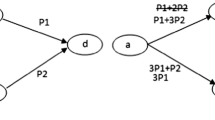Abstract
This paper proposes an opportunistic routing with data fusion (ORDF) protocol for the widely used multi-source wireless sensor networks in which the spatial-temporal correlation among sensory data is ubiquitous. In the ORDF protocol, a new routing metric, which considers the data fusion and expected any-path transmissions, is presented to select a next-hop forwarding node that could save the maximal amount of energy. A candidate set selection algorithm is proposed to find the optimal candidate set of each node. An ACK-based coordination method among candidates is also given for the design of the ORDF protocol. Simulation results show that the ORDF protocol can greatly improve the network lifetime and reduce the network delay compared to general opportunistic routing protocol, such as ExOR, EEOR and OAPF. With increase of the number of source nodes, the ORDF protocol has more significant advantages in prolonging the network lifetime and reducing the network delay.







Similar content being viewed by others
References
Banu, M. B., & Periyasamy, P. (2013). A survey of unipath routing protocols for mobile ad hoc networks. International Journal of Information Technology and Computer Science (IJITCS), 6(1), 57–67.
Sanjit, B., & Robert, M. (2005). ExOR: opportunistic multi-hop routing for wireless networks. ACM Sigcomm Computer Communication Review, 35(4), 133–144.
Azzedine, B., & Amir, D. (2014). Opportunistic routing in wireless networks: Models, algorithms, and classifications. ACM Computing Surveys, 47(2), 1–36.
Nessrine, C. (2015). A survey on opportunistic routing in wireless communication networks. IEEE Communication Surveys & Tutorials, 17(4), 2214–2241.
Lu, M. & Wu, J. (2009). Opportunistic routing algebra and its applications. In Proceedings of the IEEE conference on computer communications (INFOCOM), pp. 2374C2382.
Zhong, Z. & Nelakuditi, S. (2007). On the efficacy of opportunistic routing, sensor, mesh and ad hoc communications and networks. In Proceeding of IEEE conference on communications society, pp. 441–450.
Mao, X. F., Tang, S. J., Tang, Xu X H, Li, X. Y., & Ma, H. D. (2011). Energy-efficient opportunistic routing in wireless sensor networks. IEEE Transaction on Parallel and Distributed Systems, 22(11), 1934–1942.
Qin, Y., Li, L., Zhong, X. X., Yang, Y. Y., & Ye, Y. B. (2015). Opportunistic routing with admission control in wireless ad hoc networks. Computer Communications, 55, 32–40.
Luo, H., Tao, H. X., Ma, H. D., & Das, S. K. (2011). Data fusion with desired reliability in wireless sensor networks. IEEE Transactions on Parallel and Distributed Systems, 22(3), 501–513.
Zhang, Z. J., Lai, C. F., & Chao, H. C. (2014). A green data transmission mechanism for wireless multimedia sensor networks using information fusion. IEEE Wireless Communication, 21(4), 14–19.
Kreibich, O., Neuzil, J., & Smid, R. (2014). Quality-based multiple-sensor fusion in an industrial wireless sensor network for MCM. IEEE Transactions on Industrial Electronics, 61(9), 4903–4911.
Barnett, J. A. (2008). Computational methods for a mathematical theory of evidence. In Proceeding of international joint conference on artificial intelligence, pp. 868–875.
Ma, H. D., Zhao, D., & Yuan, P. Y. (2014). Opportunities in mobile crowd sensing. IEEE Communications Magazine, 52(8), 29–35.
Zhao, D., Ma, H. D., Tang, S. J., & Li, X. Y. (2015). COUPON: A cooperative framework for building sensing maps in mobile opportunistic networks. IEEE Transactions on Parallel and Distributed Systems, 26(2), 392–402.
So, J., & Byun, H. J. (2014). Opportunistic routing with in-network aggregation for asynchronous duty-cycled wireless sensor networks. Wireless Networks, 20(5), 833–846.
Acknowledgements
This work was supported by National Natural Science Foundation of China under Grant U1334210 and China Academy of Railway Sciences Foundation under Grant 2016YJ109.
Author information
Authors and Affiliations
Corresponding author
Rights and permissions
About this article
Cite this article
Li, J., Jia, X., Lv, X. et al. Opportunistic routing with data fusion for multi-source wireless sensor networks. Wireless Netw 25, 3103–3113 (2019). https://doi.org/10.1007/s11276-018-1705-4
Published:
Issue Date:
DOI: https://doi.org/10.1007/s11276-018-1705-4




